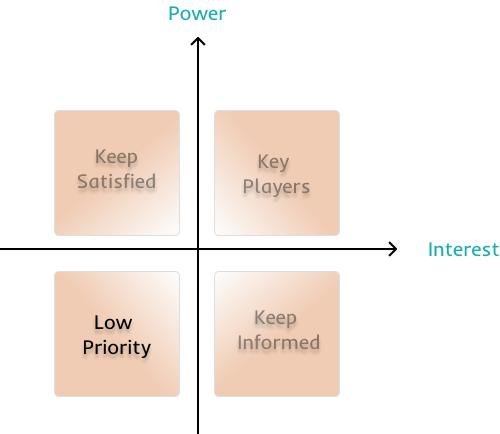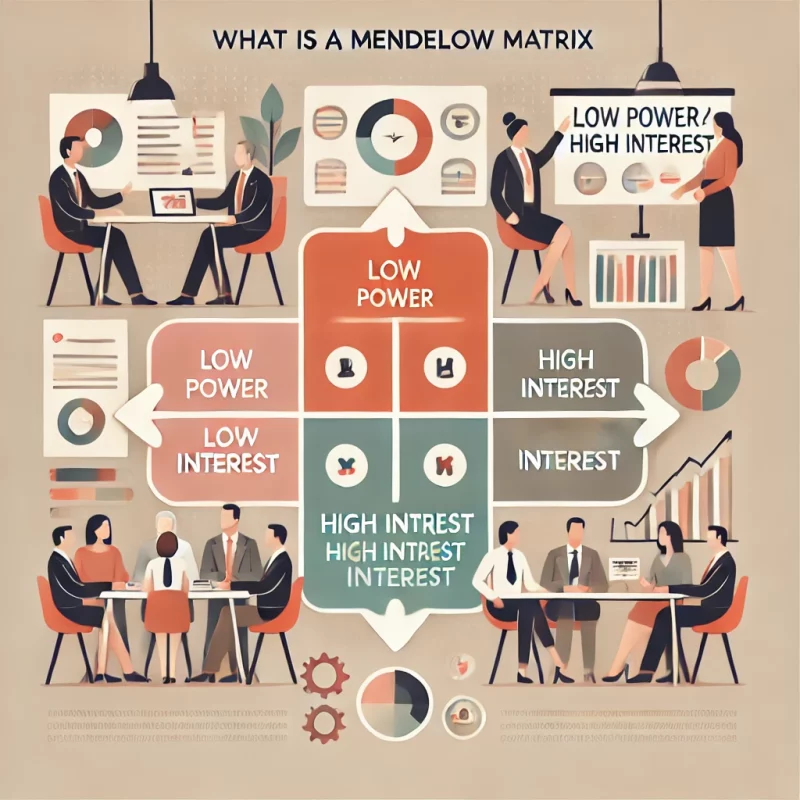What is a Mandelow Matrix
The Mendelow Matrix is a strategic tool used in stakeholder management to assess and prioritize the stakeholders based on their power and interest in a project or business initiative.
This analysis helps businesses develop tailored engagement strategies for each group, ensuring that the most influential stakeholders are actively managed, while others are appropriately informed or monitored. The Mendelow Matrix thus supports efficient resource allocation and helps maintain strong relationships with key stakeholders, leading to better project outcomes.
How to manage your stakeholders through a Mandelow matrix
By using the Mendelow Matrix you will analyze and prioritize stakeholders based on their power and interest. The matrix is divided into four quadrants based on the level of interest (low to high) and power (low to high) of stakeholders.
The Quadrants of the Mendelow Matrix

Low Power, Low Interest (Minimal Effort)
- Description: These stakeholders have little power to influence the project and are not highly interested in the outcomes.
- Strategy: Keep them informed but do not spend too much time on them. They require minimal attention.

Low Power, High Interest (Keep Informed)
- Description: Stakeholders with low power but a high interest in the project. While they cannot directly influence the outcomes, they should be kept engaged and informed.
- Strategy: Regular communication to ensure their concerns are addressed and they feel involved.

Low Power, High Interest (Keep Informed)
- Description: These stakeholders have significant power but limited interest in the project. While they may not be actively involved, their influence can be significant.
- Strategy: Keep them satisfied and ensure they remain positive about the project, but avoid overloading them with too much detail.

High Power, High Interest (Key Players)
- Description: These are the most important stakeholders, as they have both a strong interest in the project and the power to influence its outcome.
- Strategy: Actively engage them, involve them in decision-making, and ensure their needs and expectations are met. Close management is essential.
Advantages and disadvantages of using this tecnique for stakeholder analysis
✅Advantages
- Good (almost) mathematical way to prioritise your stakeholders
- Easy way to map the resources you have dedicated to each of them
- Clear representation and visualisation, also for employees from other departments
❌Disadvantages
- Static analysis which may be time-consuming to update
- You cannot derive clear actions from the classification


No responses yet